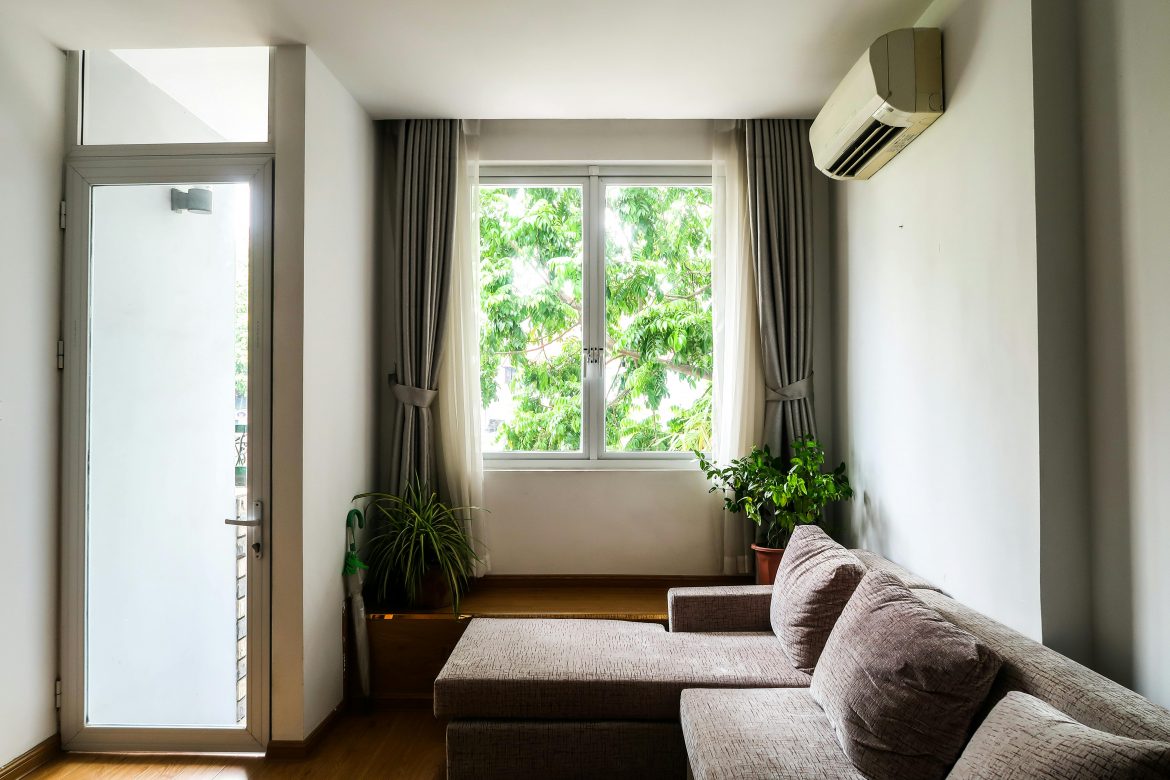A clean air-conditioner cools better, uses less electricity and keeps indoor air fresher. But there’s a line between sensible DIY care and the sort of deep cleaning that should be left to a professional. Here’s a clear, safety‑first guide to what you can do yourself, what to avoid, and how to keep your unit running smoothly all summer.
ALSO SEE: The dirtiest places in your home you’re probably not cleaning (and how to fix it)
First, safety comes first
- Switch the unit off at the isolator or mains before any maintenance. For a central/ducted system, turn off the breaker. For split systems and window units, unplug at the wall and use the outdoor isolator where fitted.
- Never spray water or cleaning liquids into live electrics, control boards or the indoor unit’s fan motor.
- If you smell a musty or “wet dog” odour, see visible mould, or the unit trips the power, stop and book a professional clean. Those are signs you need disassembly and sanitising beyond light DIY.
What you can do yourself (regularly)
Clean or replace filters
Your filters are to an air conditioner what oil is to a car. Clogged filters throttle airflow, reduce cooling and can strain or damage the compressor.
- Split/wall, window and portable units: Pop out the reusable mesh filters, vacuum dust, then wash in warm water. Let them dry completely before refitting.
- Ducted/central systems: Replace disposable return‑air filters as per the manufacturer’s schedule (typically every 1–3 months in summer, more often with pets, renovations or dust).
Dust the grilles and front panel
Wipe the indoor fascia and louvres with a slightly damp microfibre cloth, then dry. Keep curtains, blinds and furniture clear so air can move freely.
Clear the outdoor unit
Airflow around the condenser is vital.
- Brush off leaves and debris from the casing and top grille.
- Trim plants back at least 60–90 cm all around.
- Gently hose the outside of the coil fins with a low‑pressure garden hose from the inside out if you can access it safely. Avoid bending fins; never use a pressure washer.
Check the condensate drain
A blocked drain causes leaks and mouldy smells.
- For splits, find the small drain pipe exiting outside. Ensure it’s not kinked or blocked.
- If water is dripping indoors, switch off and call a technician; you may have a blockage in the pan or line that needs proper cleaning.
Improve how efficiently it runs
- Close blinds/curtains during the hottest hours.
- Use ceiling or pedestal fans to distribute cool air.
- Set a sensible temperature (around 24–25°C is usually comfortable and energy‑wise).
- Ensure the unit is in a ventilated spot; outdoor units should never be boxed in.
What you should not attempt
- Internal deep cleaning of the indoor coil, blower wheel and drain pan. This requires partial disassembly, isolating electrics and applying specialised, rinse‑safe sanitisers to remove biofilm and mould. Incorrect DIY can damage electronics or spread contaminants.
- Chemical coil washing without proper products, catchment and rinsing. Harsh agents and overspray can corrode metals, harm finishes and contaminate your home.
- Accessing sealed electrical compartments, sensors or wiring. Electrocution and voided warranties are real risks.
- Refrigerant handling or performance testing. Gas work must be done by certified technicians. Low refrigerant is a fault to diagnose, not a DIY “top‑up”.
How often to do what
- Filters: check monthly in summer; clean/replace as needed.
- Outdoor unit: clear debris monthly; rinse the coil in spring and again in early autumn.
- Professional service/clean: every 12–36 months, depending on usage and dust levels; annually for large central systems or if your heat pump also does winter heating.
Quick troubleshooting before you call for help
- Poor cooling: Clean filters; check windows/doors; verify setpoint; ensure outdoor unit has airflow.
- Musty smell: Check for standing water at the drain outlet; if odour persists, book a professional sanitising clean.
- Ice on indoor or outdoor coil: Switch off and call a pro—possible airflow restriction, dirty coil, or refrigerant issue.
- Leaking indoors: Likely a blocked drain; shut down and call a technician.
Routine DIY care is smart. Keep filters spotless, the outdoor unit breathing, and drains clear. But deep cleaning, mould treatment, electrics and any refrigerant‑related work are not DIY territory—bring in a qualified technician to keep the system hygienic, safe and efficient.
ALSO SEE:
Featured Image: Pexels

